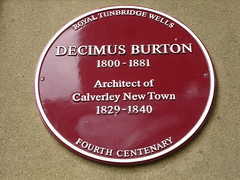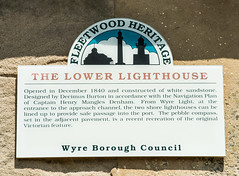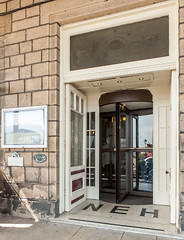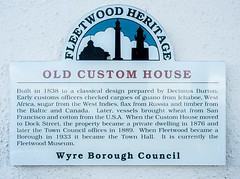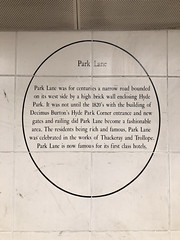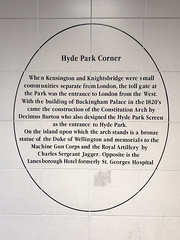

Decimus Burton
(1800-1881)
Died aged c. 81
Wikidata WikipediaDecimus Burton FRS FRSA FSA FRIBA (30 September 1800 – 14 December 1881) was one of the foremost English architects and landscapers of the 19th century. He was the foremost Victorian architect in the Roman revival, Greek revival, Georgian neoclassical and Regency styles. He was a founding fellow and vice-president of the Royal Institute of British Architects, and from 1840 architect to the Royal Botanic Society, and an early member of the Athenaeum Club, London, whose clubhouse he designed and which the company of his father, James Burton, the pre-eminent Georgian London property developer, built. Burton's works are Hyde Park, London (including the gate or screen of Hyde Park Corner, and the Wellington Arch, and the Gates); Green Park and St James's Park; Regent's Park (including Cornwall Terrace, York Terrace, Clarence Terrace, Chester Terrace, and the villas of the Inner Circle which include his own mansion, The Holme, and the original Winfield House); the enclosure of the forecourt of Buckingham Palace from which he had Nash's Marble Arch moved; the clubhouse of the Athenaeum Club, London; Carlton House Terrace; Spring Gardens in St. James's; and the Palm House and the Temperate House at Kew Gardens. Burton designed the seaside towns of St Leonards-on-Sea, Fleetwood, and Folkestone, and also Royal Tunbridge Wells. His Calverley Estate (of which only a small proportion survives) was highly commended. Burton was a member of London high society during the Georgian era and during the Regency era. He had close friendships with Princess Victoria (the future Queen Victoria); the Duchess of Kent; William Cavendish, 6th Duke of Devonshire, John Wilson Croker, and Sir Humphry Davy. The Burtons' London mansion, The Holme of Regent's Park, which was built by James's company to a design by his son Decimus Burton, was described by 20th century architectural critic Ian Nairn as 'a definition of Western civilization in a single view'. Burton also contributed to the design of their Tonbridge Kent mansion, Mabledon.
DbPedia
Commemorated on 7 plaques
Decimus Burton 1800-1881 Architect of Calverley New Town 1829-1840
Calverley Park, Tunbridge Wells, United Kingdom where they was
Tivoli Lodge 1830 built 1830 by Decimus Burton. The entrance lodge to Royal Beulah Spa and Pleasure Gardens
39 Beulah Hill, Upper Norwood, SE19, London, United Kingdom where they built (1830)
The Lower Lighthouse Opened in December 1840 and constructed of white sandstone. Designed by Decimus Burton in accordance with the Navigation Plan of Captain Henry Mangles Denham. From Wyre Light, at the entrance to the approach channel, the two shore lighthouses can be lined up to provide safe passage into the port. The pebble compass, set in the adjacent pavement, is a recent recreation of the original Victorian feature.
The Esplanade, Fleetwood, United Kingdom where they was
North Euston Hotel Opened in 1841 and designed in the Greek classical style by Decimus Burton. The original hotel manager was Xenon Vantini, a Corsican, who had been a courier to Napoleon Bonaparte. Luxury and full board accommodation originally cost less than 50p a day. In 1859 the hotel was sold to the Government as a School of Musketry for the military. Forty years later it resumed its role as a major hotel and is currently owned by local business families. Amongst famous visitors was the Right Honorable Margaret Thatcher, Britain's first woman Prime Minister. Wyre Borough Council
The Esplanade, Fleetwood, United Kingdom where they was
Old Custom House Built in 1838 to a classical design prepared by Decimus Burton. Early customs officers checked cargoes guano from Ichaboe, West Africa, sugar from the West Indies, flax from Russia and timber from the Baltic and Canada. Later, vessels brought wheat from San Francisco and cotton from the U.S.A. When the Custom House moved to Dock Street, the property became a private dwelling in 1876 and later the Town Council offices in 1889. When Fleetwood became a borough in 1933 it became the Town Hall. It is currently the Fleetwood Museum.
6-7 Queens Terrace, Fleetwood, United Kingdom where they was
Park Lane was famous for centuries a narrow road bounded on its west side by a high brick wall enclosing Hyde Park. It was not until the 1820's with the building of Decimus Burton's Hyde Park Corner entrance and new gates and railings did Park Lane become a fashionable area. The residents being rich and famous, Park Lane was celebrated in the works of Thackeray and Trollope. Park Lane is now famous for its first class hotels.
Park Lane, London, United Kingdom where they was
Hyde Park Corner When Kensington and Knightsbridge were small communities separate from London, the toll gate at the Park was the entrance to London from the West. With the building of Buckingham Palace in the 1820's came the construction of the Constitution Arch by Decimus Burton who also designed the Hyde Park Screen as the entrance to Hyde Park. On the island upon which the arch stands is a bronze statue of the Duke of Wellington and memorials to the Machine Gun Corps and the Royal Artillery by Charles Sergeant Jagger. Opposite is the Lanes borough Hotel formerly St. Georges Hospital
Piccadilly, London, United Kingdom where they was
